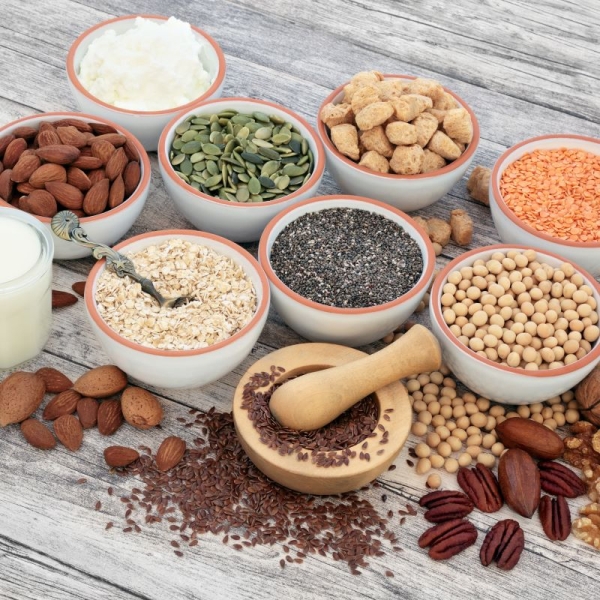Contents
- 1 Data from individual participants
- 2 Causal links
- 3 The researchers call for more research in the Middle East and North Africa, which have the highest rates of type 2 diabetes.
- 4 International reach
- 5 Dietary guidance recommends decreasing red and processed meat intake, and use alternatives such as pulses and tofu.Nutrition advice
21 Aug 2024 — Regular consumption of meat is associated with a higher risk of type 2 diabetes, according to a data analysis on close to 1.97 million people worldwide. Researchers reveal a 15% higher risk of developing the disease in the next ten years among people who frequently consume 50 g of processed meat daily, about two slices of ham, and a 10% higher risk for people regularly consuming 100 g of unprocessed red meat a day, equivalent to a small steak.
Although 100 g of poultry daily was linked to an 8% higher risk of developing type 2 diabetes, additional analyses testing different scenarios resulted in a weaker association for poultry consumption. Meanwhile, the associations between processed meat and unprocessed red meat persisted.
“Our research provides the most comprehensive evidence to date of an association between eating processed meat and unprocessed red meat and a higher future risk of type 2 diabetes. It supports recommendations to limit the consumption of processed meat and unprocessed red meat to reduce type 2 diabetes cases in the population,” comments professor Nita Forouhi of the Medical Research Council (MRC) Epidemiology Unit at the University of Cambridge, UK, and a senior author on the paper.
“While our findings provide more comprehensive evidence on the association between poultry consumption and type 2 diabetes than previously available, the link remains uncertain and needs further investigation.”
The researchers used the global InterConnect project to analyze data from 31 study cohorts in 20 countries. This project aims to optimize existing data to enable new research into the causes of diabetes and obesity.
Data from individual participants
Rather than using published results, the researchers could use participant data from diverse studies through the InterConnect project, of which 18 had not previously published findings on the link between meat consumption and type 2 diabetes. The results are published in The Lancet Diabetes & Endocrinology.
“Previous meta-analysis involved pooling together of already published results from studies on the link between meat consumption and type 2 diabetes. However, our analysis examined data from individual participants in each study. This meant that we could harmonize the key data collected across studies, such as the meat intake information and the development of type 2 diabetes,” explains Dr. Chunxiao Li of the MRC Epidemiology Unit, the study’s lead author.
“Using harmonized data also meant we could more easily account for different factors, such as lifestyle or health behaviors, that may affect the association between meat consumption and diabetes.“

By using data from individual participants in 31 cohorts, the researchers could harmonize the key data collected across studies.Among the 1,966,444 participants in the study, the researchers found 107,271 incident cases of type 2 diabetes during an average follow-up of 10 years.
Across the cohorts, average meat consumption amounted to 0–110 g daily for unprocessed red meat, 0–49 g for processed meat and 0–72 g for poultry. Higher consumption of all three meat types was linked to an increased incidence of type 2 diabetes.
Causal links
The researchers also considered factors such as age, gender, body mass index, number of incident cases, follow-up duration, levels of meat consumption, dietary assessment approach and location. They concluded that no specific factor investigated could account for the study’s results.
Dr. Duane Mellor, dietitian and spokesperson for the British Dietetic Association, comments on the paper. He states that the authors tried to control for other risk factors for type 2 diabetes, such as body weight, smoking, alcohol and low vegetable intake.
“However, due to missing data in the studies, the authors could not account for the effect of family history, insulin resistance or waist circumference, which are more strongly associated with the risk of developing diabetes than many of the risk factors that were accounted for.”
“So, it is possible that the increased risk associated with processed and red meat intake could be a result of these other confounding factors the analysis was unable to take account of,” he cautions.
Although the observational study cannot demonstrate causality, the authors highlight several causal mechanisms that may explain the identified links based on earlier research. For example, they note that red meat is high in saturated fatty acids and low in polyunsaturated fatty acids, and switching to a diet rich in polyunsaturated fatty acids was linked to improved insulin resistance.
Research has also linked a high intake of animal protein to an increased risk of type 2 diabetes and associates nitrate or nitrite additive and N-nitroso compounds during meat processing to a higher disease risk. However, the research team cautions that more studies are needed to establish these mechanisms.

The researchers call for more research in the Middle East and North Africa, which have the highest rates of type 2 diabetes.

International reach
The 31 study cohorts provided data from the Americas (12), Eastern Mediterranean (2), Europe (9), Southeast Asia (1) and Western Pacific (7).
“InterConnect enables us to study the risk factors for obesity and type 2 diabetes across populations in many different countries and continents around the world, helping to include populations that are under-represented in traditional meta-analyses,” explains professor Nick Wareham, director of the MRC Epidemiology Unit, and a senior author of the paper.
“Most research studies on meat and type 2 diabetes have been conducted in the US and Europe, with some in East Asia. This research included additional studies from the Middle East, Latin America and South Asia and highlighted the need for investment in research in these regions and Africa.”
The researchers note that the prevalence of type 2 diabetes in the Middle East and North Africa is the highest globally, at 16.2%. They recommend further research in this and other regions, including South Asia, to better understand the association between meat consumption and the development of the disease.
“The potentially unique characteristics of meat consumption, the overall diet and the cooking methods in such regions could aid local prevention strategies and advance our understanding of the mechanisms linking meat consumption to type 2 diabetes risk,” the study states.

Dietary guidance recommends decreasing red and processed meat intake, and use alternatives such as pulses and tofu.Nutrition advice

According to the study, replacing processed meat consumption with unprocessed red meat and poultry was linked to a lower risk of developing type 2 diabetes. However, the authors underscore that additional research is needed to investigate the positive link between poultry consumption and disease risk.
They also call for further investigation of sustainable dietary patterns to reduce meat consumption and determine their effect on other non-communicable diseases, multi-morbidity and planetary health.
“Meat consumption generally exceeds dietary guidance,” agrees Dr. Hilda Mulrooney, reader in Nutrition & Health at London Metropolitan University, UK, and commenter on the study. “Current recommendations are to reduce intakes of red and processed meat, and the findings of this study align with those recommendations.”
“Current dietary guidance also recommends replacing red and processed meats with meats such as poultry, in addition to reducing overall meat consumption using alternatives such as peas, beans, lentils and tofu.”
Mellor adds that in addition to moderating meat intake, national healthy eating guidelines advise diets based on “vegetables, fruit, nuts, seeds, beans, peas and lentils along with some wholegrain and moderate amounts of meat and dairy with limited amounts of added fat, salt and sugar.”
However, he cautions: “If people are considering reducing their meat intake, it is important that the nutrients found in meat are obtained from other foods. These include iron, vitamin B12 and protein. When considering reducing or taking a type of food out of the diet, it is important that any replacement foods provide the same nutrients to maintain a healthy diet overall.”
By Jolanda van Hal

